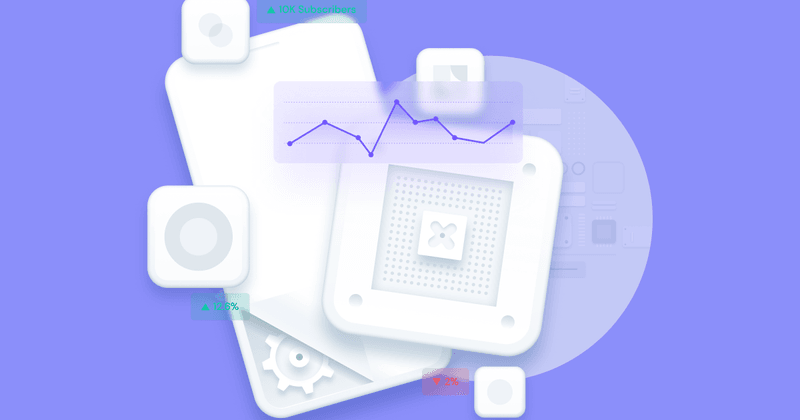What is RevenueCat?
A Guide for Non-Developers

Mobile apps have come a long way since the App Store first started supporting subscriptions in 2011.
Subscriptions provide developers with steady, recurring revenue, and this predictable revenue enables them to keep shipping new features and experiences for their customers. For consumers, this opened up a whole new world of ever-improving apps and services that are easy to try out — and that gets updated and improved over time.
Subscriptions ultimately enabled apps like VSCO, Calm, and Duolingo to grow into multi-million (in some cases, billion) dollar businesses.
But along with this growth came a new set of challenges. Today, building and managing the infrastructure needed to power in-app purchases poses unique challenges that can hold app businesses back.
Enter RevenueCat
RevenueCat is an all-in-one subscription platform for mobile apps. Here’s why some of the top apps in the world use RevenueCat to power their in-app purchases.
Decrease time to market
Are you a small team building a new subscription app? Or an established business launching a new digital experience on mobile? Or maybe you already have a large mobile user base and are trying to create a new revenue stream for your business?
No matter what size business you have, building mobile subscription infrastructure from scratch is complex and time-consuming. If you build an in-house solution, your team will have to spend time and resources spinning up client-side purchase code, a sophisticated backend with databases and APIs to tie everything together (for both the App Store and Google Play). You’ll also need to account for the numerous edge cases that occur with subscriptions, such as crossgrades, downgrades, upgrades, and cross-platform entitlements. This can take months of heavy lifting for both your frontend and backend engineers.
RevenueCat can help you launch subscriptions in a matter of days or weeks. Let our platform handle the heavy lifting for you — so you can focus on the core features of your app.
Reduce infrastructure complexity and costs
If you have an established subscription app business, your team already has an internal system for handling mobile purchases. Chances are this architecture was built over time as your business scaled — and has accumulated technical debt that consumes engineering resources and makes it difficult to quickly iterate. Subscriptions are notoriously complex and full of edge cases like:
- How does the app handle upgrades, downgrades, and crossgrades?
- What if a customer subscribes on an iPad, but owns an Android phone?
- How do you maintain subscription status server-side?
- How does your app handle grace periods, refunds, and credit card failures?
- Do you support discounts, like promo and subscription offers?
- Your engineering team also has to keep up with regular updates from the App Store and Google Play. Apple’s Family Sharing feature is a great example. RevenueCat supported Family Sharing from day one, while many apps were left scrambling to build support for it internally.
Rather than devoting scarce engineering resources to managing an old, internal subscription system that requires regular maintenance, let RevenueCat do the hard work for you. You’ll reduce the unpredictable costs of maintaining your old system and free up resources for more initiatives related to your core business.
Improve data accuracy
Monetization data is important for every consumer subscription business. The App Store and Google Play structure this data differently, which means your team has to collect and normalize the data in order to understand your customers.
At scale, it’s surprisingly challenging to answer questions about how much revenue is generated from specific users or cohorts. Many apps also have discrepancies between data collected from Apple vs. Google vs. data from an internal backend system.
Without accurate subscriber data, it’s incredibly difficult to track important metrics like conversions, retention, churn, and longtail revenue.
RevenueCat acts as your source of truth for all subscriber data and monetization events. Our platform normalizes subscriber data across iOS, Android, and Stripe — making it easy to analyze or export this data via ETL or CSV. With normalized data, you can calculate LTV and retention metrics to better understand your subscriber base.
In addition, our 20+ integrations can help you get the most out of your investments in tools like Braze, Amplitude, and AppsFlyer.
Peace of mind
If you’re working to grow your app business, an important next step is to fortify your subscription infrastructure and provide accurate data to your business team.
Our mission at RevenueCat is to help developers make more money. We provide world-class infrastructure and data so that you can focus on taking your app business to the next level. Want to give it a spin? Try it for free today, or schedule a demo with us, and our team will show you around.
You might also like
- Blog post
Building a lovable alien and a $1M ARR AI app
Ajay Mehta explains how smart monetization and standout characters helped Tolan cut through the AI hype.
- Blog post
Why Your Apple Search Ads Attribution Is About to Spike—And What It Actually Means
How view-through attribution impacts your acquisition analytics
- Blog post
How four paywall redesigns boosted conversions and revenue
What actually worked when redesigning paywalls across fintech, gaming, and health.

